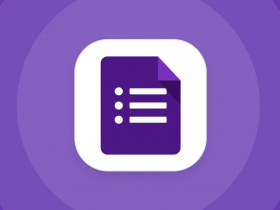
How to use an online form to run a survey
Survey tools are an effective way to gain insight into your customers and how you operate your business. Surveys are used to obtain answers in a variety of areas such as customer satisfaction, market research, product testing, and employee engagement.
But it can be difficult to get high completion rates on your survey forms. Worse, you could get lots of replies but find the responses hard to interpret or quantify. In this blog, we look at a few golden rules for creating a great survey that gets real results.
What is the purpose of your survey?
Before you even think about your survey questions, you should define the purpose of your survey. Ideally, it will facilitate a business goal you have in mind. Once you know what this is, the questions can be designed to fulfil this goal. You might want to know why a particular item is not selling well or even to uncover new needs that your customer might have.
What types of question are right for your survey?
Close ended surveys work well and are less time-consuming for users. Close ended questions have pre-defined answers for the user to pick from, rather than allowing for free-form answers. If customers think that a survey is going to take a long time to finish, they may not start it.
Have you given clear instructions?
You should use plain and direct language on your survey and be clear about what answers you are looking for. This makes it less likely the user will be confused and or misunderstand the questions being asked of them, because that would ultimately affect the quality of the data you collect.
Have you given a balanced set of answer choices?
You need to provide your respondents with the right number of answer choices. If you don’t, it can affect the overall value of the data that you have collected. If the answer options are too restricted, this can allow bias to creep into the results. Remember to allow for negative feedback as well as positive!
This answer template is well-balanced and provides options for a customer to describe how they really feel about a product/service:
- Very helpful
- Helpful
- Neither helpful nor unhelpful
- Unhelpful
- Very unhelpful
Have you asked two questions at once?
Confusing respondents is just as bad as influencing their answers. If your question covers two issues or topics at once, but respondents can only give one answer, you will get poor quality results. This is the concept of double-barrelled questions, and it’s one of the top mistakes that survey creators make. An example of a double-barrelled question is:
“How would you rate our shop assistants and after-service care?”
On the surface, this may look like a good question because you can use it to judge your customers’ interactions with the company. However, if they had an excellent experience in your shop followed by a frustrating string of calls to your helpline, you will get a variety of possible answers. To find out what people think of your shop staff and your after-service helpline, separate these two topics into their own question.
How different are your questions?
Remember not to ask the same question twice. If you keep asking similar questions, users will either abandon the survey or start giving you poor quality answers because it’s too much effort to guess the point of the question. Counter this tendency by varying the types of question you ask, how you ask them, and separating questions that might seem similar.
The only reason for the next question in your survey to be similar to the one before is if it is a follow-up question or is there to give users a chance to add a freeform answer after a close ended answer.
Are most of your survey questions optional?
Respondents may not know the answers to all your questions, or there may be some questions they simply don’t feel comfortable answering. Keep both of these things in mind when deciding which questions are required vs optional. If you’re unsure whether to make a certain question required, lean towards making it optional. We’ve found that forcing respondents to answer questions makes them more likely to abandon the survey or select an answer at random.
And, if you'd like more pointers on improving form completion rates, check out our blog How to use online forms to conduct research.
Have you tested your survey?
As a survey creator, there’s no worse feeling than finding mistakes in your survey once it’s already sent. Prevent the situation from happening to you by sharing your survey with colleagues or stakeholders for feedback. A fresh pair of eyes is often all it takes to spot mistakes in a survey.
Writing a good survey means asking questions in a way that lets respondents answer truthfully. At the same time, it means providing respondents with a quick and easy survey-taking experience.
Try creating a survey on Powform
Powform offers a smooth experience for your users, with lots of customisability for you and your team. Send your draft survey to your colleagues and they can comment on the flow of the questions, any grammatical errors, and the wording of the questions. You can then make the changes you need to in seconds and republish. Your branded survey app will be perfect before you launch, and any details you might have missed can be corrected swiftly. Try our drag-and-drop form-builder for free, no account needed unless you want to save your work!
Related Articles

How to use online forms to create a quiz

What is no-code software development?

Google Forms versus Powform's no-code solutions
Highly Configurable - No Coding
Build professional and fast branded e-commerce and customer data collection web apps, no coding experience needed. Scalable solutions that can be built and integrated into your business in minutes.
Powform enables you to create branded, interactive, multi-feature apps for mobile and desktop browsers, including all the smart features you need to collect customer data and payments. With the addition of conditional logic you can provide a more tailored experience for your customers.
Our managed secure database allows you to store and analyse all submitted web app data.
Want to store all app data in house?
App submissions can be directed to other business systems via secure authenticated api services.
Contact us today to discuss your custom branded no-code web apps requirements.

